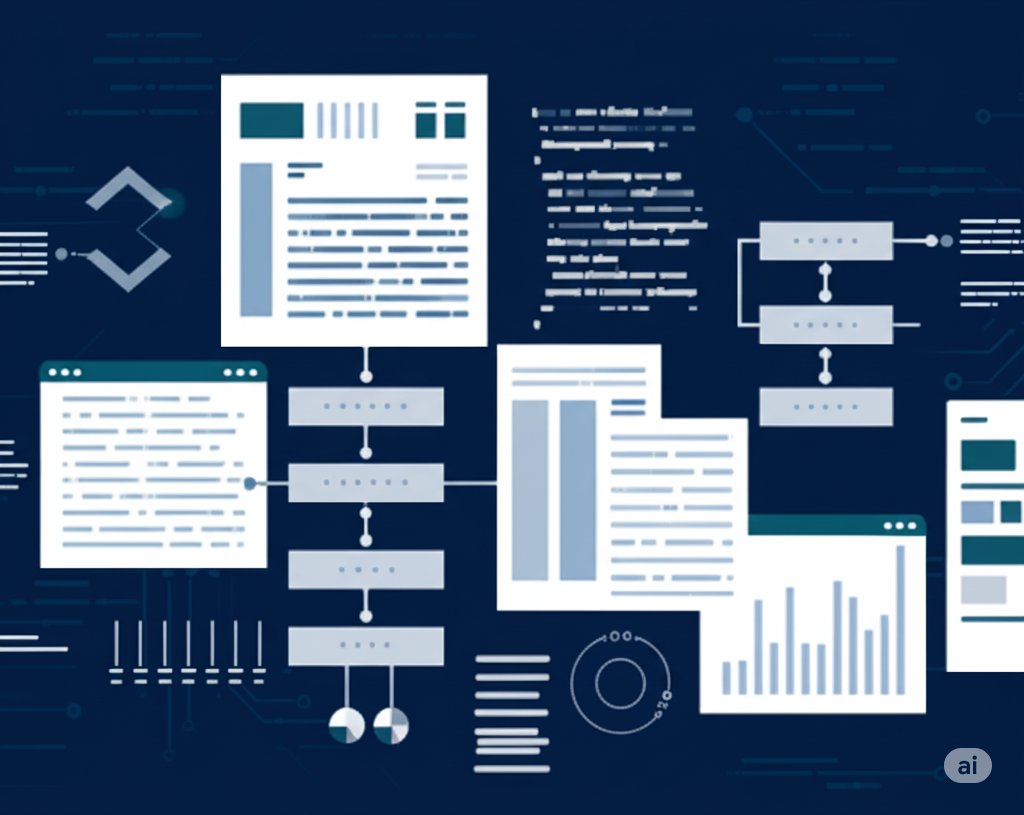The future of dev is already here
July 17, 2025 | 4 min read

As we’ve built more AI-powered experiences for developers, one thing has become clear: GenAI is more than just a tool, it’s a partner.
While it’s great for saving time and boosting productivity, its real strength lies in how it transforms the way teams work. By taking on the repetitive and routine, GenAI enables developers to tackle more challenging problems and focus on creativity. It optimizes onboarding, simplifies processes and automates tasks, so teams spend less time searching for answers and resources and more time on development and deployment.
What once felt out of reach is now within grasp. Developers are compromising less and delivering more.
Breaking down barriers to collaboration
One of the biggest barriers to collaboration in large organizations is the presence of silos. Whether it’s team-specific knowledge or individual insights from years of experience, these gaps can slow progress and hinder collaboration.
AI helps dismantle these barriers. A centralized, intelligent knowledge base makes institutional knowledge accessible to everyone—from new hires to senior leaders. It’s not just about storing information; it’s about making it discoverable, usable, and actionable.
Without this shared foundation, teams might unknowingly duplicate efforts, building similar features in isolation and creating inconsistent experiences. But with an AI-powered knowledge hub, everyone stays aligned on best practices, architectural patterns, and reusable components—accelerating progress and reducing redundancy.
Smarter onboarding for stronger starts
As new team members join, ensuring they have access to the right resources can make a big difference—not just for them, but for the teams they’re joining. A centralized, AI-powered onboarding experience helps standardize training and support, so every new hire receives the same high-quality introduction, no matter when or where they start.
Having an onboarding portal that walks new developers through setup, offers interactive tutorials on internal tools, and answers common questions in real time, helps new hires ramp up faster, and also frees up experienced team members to focus on deeper mentoring and more strategic work. The result? New developers feel confident and connected from day one.
Smarter tools, better code
Once developers are up and running, AI continues to enhance their experience across the entire development lifecycle. Unified platforms, leveraging AI and automation simplify deployment, triage, and monitoring into a streamlined workflow.
AI-powered tools are accelerating the development lifecycle, making it faster, more efficient, and less error-prone. From the earliest stages of a project, AI can accelerate prototyping by generating boilerplate code, suggesting design patterns, and even creating UI layouts from natural language prompts. As projects progress, AI continues to play a critical role. It can analyze logs, detect patterns in error messages, and recommend fixes—dramatically reducing the time spent troubleshooting. It also helps teams make sense of large datasets, uncovering insights that guide smarter feature development and optimization. This means developers can move from idea to working prototype in a fraction of the time.
Documentation, often a pain point, also becomes much easier to manage. AI can generate and update docs based on the codebase, highlight areas needing clarification, and translate technical language into something more accessible, keeping documentation useful and up to date.
And when complex issues arise, AI acts as a helpful assistant. It doesn’t just flag problems; it offers solutions, surfaces relevant code snippets, and recommends best practices based on a deep well of prior knowledge. Take, for example, a developer facing a tricky bug in a microservice. Instead of manually digging through thousands of log lines, they can use an AI-powered observability tool. Within minutes, it identifies the root cause, pinpoints the exact service and function involved, and even suggests a code fix. What once took hours now takes minutes—freeing the developer to focus on solving the problem, not just finding it.
From monitoring to prevention
AI’s impact doesn’t stop at development—it extends into operations, where it plays a critical role in maintaining system health. In complex platform environments, even small anomalies can lead to major outages if left unchecked. That’s where AI steps in—not just as a monitor, but as an early warning system. By continuously analyzing system metrics, logs, and network traffic, AI can detect subtle shifts in behavior—like a gradual increase in latency or a dip in resource availability—that might signal a deeper issue. Instead of reacting to failures, operations teams can intervene early, armed with context and potential causes. It’s a shift from reactive firefighting to proactive performance management.
From onboarding to observability, AI is reshaping the developer experience at every stage. But the impact doesn’t stop with tools and workflows; it’s also changing what it means to be a developer.





